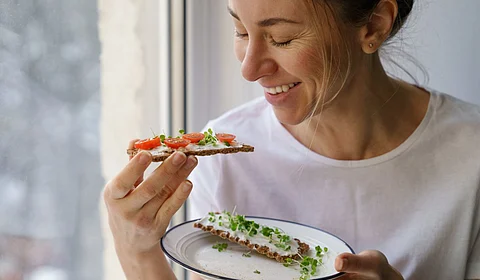
- Home
- About Us
- SOULIVITY TODAY Radio Show!
- COMMUNITY HUB
- GO SHOP by Soulivity!
- ColumnsColumns
- CultureCulture
- Lifestyle
- Contact Us!

Making protein a priority in your daily diet can have powerful benefits, from building muscle to keeping you energized and full throughout the day. If you’re wondering how to meet your protein needs without getting bored or overwhelmed, you’re in the right place. These simple and actionable tips will help you hit your daily protein goal.
One of the most straightforward ways to reach your protein goals is by incorporating high-protein foods into every meal. Start your day strong with eggs, which pack around six grams of protein per egg, or try a hearty breakfast with Greek yogurt and granola for a solid dose of approximately 20 grams of protein.
For lunch or dinner, focus on lean meats like chicken or turkey, which are not only high in protein but also low in fat. Are you looking for another option? Eating steak for breakfast is a great way to increase your protein intake. It might sound unconventional, but steak delivers a massive protein punch and sets the tone for the rest of your meals.
Protein powders and supplements can make a big difference, especially if you’re short on time. Whey protein is widely recognized for its rapid absorption and complete amino acid profile, making it an excellent choice for post-workout recovery. For a slower, more prolonged release, try casein protein, which is perfect before bedtime.
If you prefer plant-based options, soy, pea, or rice protein powders are excellent additions to smoothies, oatmeal, or even baked goods. These can help you hit your daily numbers without overcomplicating your routine.
Snacking doesn’t have to derail your progress. Select options that are naturally rich in protein and filling. Reach for almonds or pistachios, each providing around six grams of protein per ounce. You can also try protein bars.
Edamame and roasted chickpeas are also tasty and convenient choices. These snacks help bridge the gap between meals and easily boost your intake.
Advanced meal planning helps prevent protein deficiencies. Spend a little time each week prepping meals that center around protein. For example, you can cook a batch of lean ground beef or bake chicken breasts, so you always have something ready to add to dishes.
Add hard-boiled eggs to your prep routine for an easy grab-and-go option. Takeout temptations become less appealing when you already have balanced, protein-packed meals waiting for you.
Keeping tabs on your protein intake throughout the day helps you stay on track. Use apps like MyFitnessPal or Cronometer to monitor exactly how much protein you’re consuming. If apps aren’t your thing, a simple notebook can do the trick.
Recording your meals provides clarity, showing whether you’re right on track or need to prioritize protein in your next snack or meal. Tracking also gives you insights into which foods work best for your lifestyle and goals.
Getting more protein won’t be overwhelming or boring when you follow the above tips. From beginning with protein-rich foods to snacks, supplements, and meal plans, these strategies offer practical ways to achieve your goals. Start incorporating these tips into your daily routine, and you’ll notice the benefits in your energy, fitness, and overall well-being in no time!
